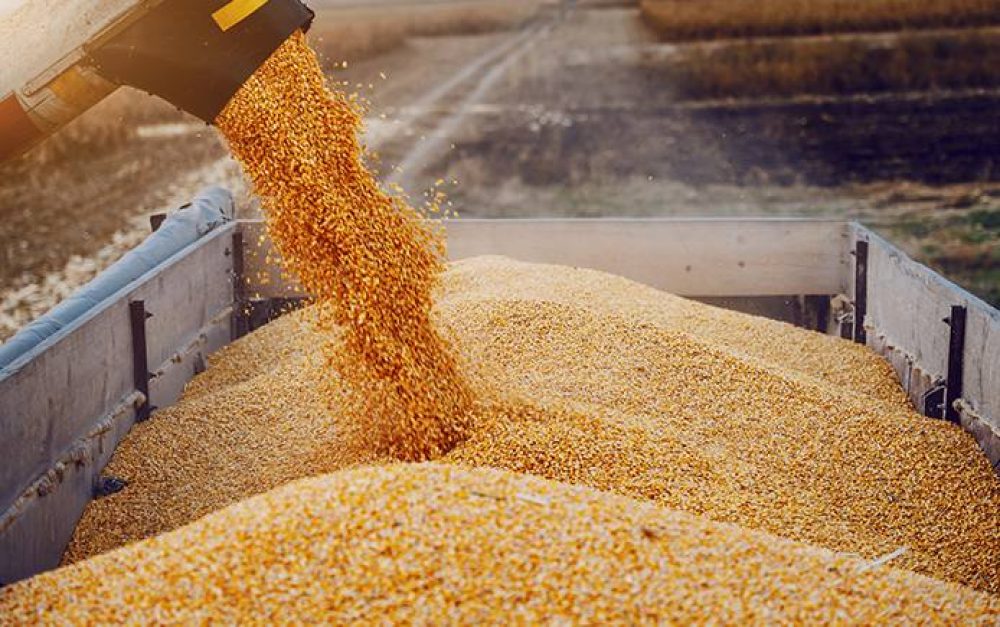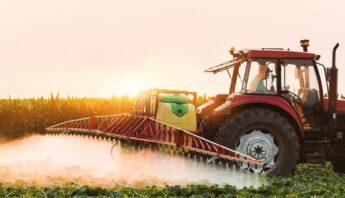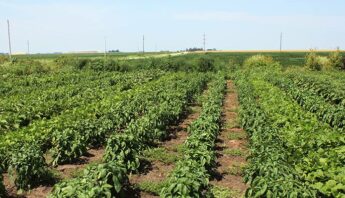For years now, pesticide industry giants have been peddling their genetically engineered (GE) technology kits: modified seeds and the herbicides that go with them. Clear evidence shows this system is dangerous, brittle and failing, yet these corporations are now doubling down.
Right now, the US Department of Agriculture (USDA) is considering a request from Monsanto (recently acquired by Bayer) to approve a new GE corn seed engineered for use with five — yes, five — different herbicides. This is a truly terrible idea.
For years now, pesticide industry giants have been peddling their genetically engineered (GE) technology kits: modified seeds and the herbicides that go with them. Clear evidence shows this system is dangerous, brittle and failing, yet these corporations are now doubling down.
Right now, the US Department of Agriculture (USDA) is considering a request from Monsanto (recently acquired by Bayer) to approve a new GE corn seed engineered for use with five — yes, five — different herbicides. This is a truly terrible idea.
The GE/herbicide combo has been a great business model for the pesticide industry — especially since weeds inevitably develop resistance when chemicals are used in field after field, year after year. Corporations like Monsanto and Dow (now Bayer and Corteva) have consistently responded to weed resistance with their next “solution” — ensuring a continuous pipeline of profit-driving new products. Profits for them, that is. Benefits for farmers? Not so much.
A failing system
Just as we — along with many farmers and weed scientists — predicted back in 2012 when the floodgates opened wide for GE seeds, weed resistance is accelerating fast. By current estimates, farmers are struggling to control more than 100 million acres of “superweeds” that have evolved in response to the widespread use of Monsanto’s Roundup-ready crops.
Sadly, the damage we and others warned about from herbicides drifting onto crops that are not engineered to withstand them has also come to pass. Here’s Iowa corn and soybean farmer George Naylor raising the alarm back in 2012:
Widespread planting of 2,4-D corn will inevitably lead to a surge in the herbicide’s use. This will not only have adverse effects on public health from air and water pollution, but will also pose another economic risk to Midwest farmers whose non-2,4-D resistant crops will take the brunt of more herbicide drift.”
While the expected expansion of 2,4-D corn has been delayed (for several years, China refused to approve imports of 2,4-D crops), widespread adoption of dicamba-tolerant soy had the exact impact George predicted. Since its use on GE soy was approved in 2016, dicamba has damaged or destroyed millions of crop acres, causing huge financial losses for thousands of farmers across the country.
An old and drift-prone herbicide, dicamba was introduced as a “solution” to weeds that have become resistant to Roundup. Now dicamba-resistant weeds are quickly emerging, and weed scientists estimate this herbicide will completely lose its effectiveness within 3-5 years. The pesticide treadmill is gaining speed.
There is, however, some good news for farmers on dicamba. It turns out EPA sidestepped its own legal process when they approved these new uses for the herbicide; after a lawsuit by PAN and our partners, a court recently ordered these dangerous products off the market.
2,4-D, dicamba, quizalofop — oh my!
Corporations are now scampering to keep the pipeline of their profit-driving GE products flowing. Under this (particularly industry-friendly) administration, they’re getting a helping hand from the public agencies tasked with their oversight.
The petition USDA is now considering from Monsanto/Bayer would allow use of a new corn seed engineered to tolerate applications of dicamba, glufosinate, quizalofop, 2,4-D, and tissue-specific glyphosate.
These GE seeds must not reach fields. They will hurt farmers and put the health of rural communities at risk — and are the exact opposite of what our agricultural system needs right now. Join us in telling USDA it’s time to say no.
It’s pretty clear that the pesticide/biotech corporations are working overtime to eke out a few final years of profits, as the industrial model of farming built on their GE/herbicide technologies crumbles. It’s even clearer that seeds engineered for use with multiple herbicides are not what we need.
Self-regulation? Another bad idea.
On top of all this, last month USDA published new rules for federal regulation of GE seeds and other genetically engineered organisms that lets corporations self-determine whether their products should be subject to regulatory review or undergo environmental risk assessment.
Yep, that’s right. Industry gets to decide whether their GE products should be regulated — or not. Here’s PAN senior scientist Marcia Ishii-Eiteman’s take on this new “regulatory framework” for GE crops:
By abdicating the last of its responsibility to protect the public good in favor of corporate profit, USDA is encouraging a flood of new, untested genetically engineered organisms into our rural landscapes, putting farmers, ecosystems and our food supply at risk.”
It’s time to invest in and build a more resilient food and farming system that supports healthy soil, crops and communities instead. Let’s make it happen.









